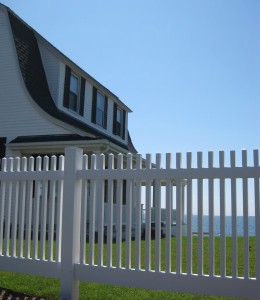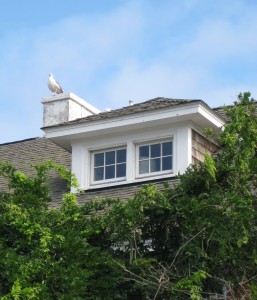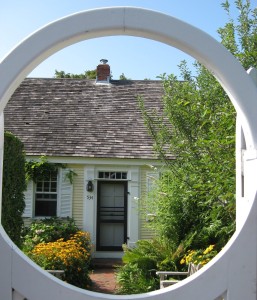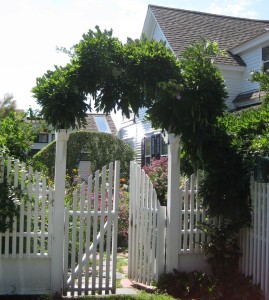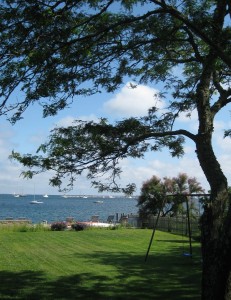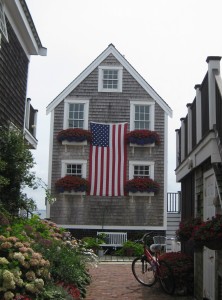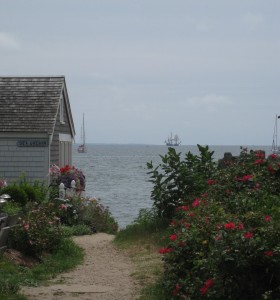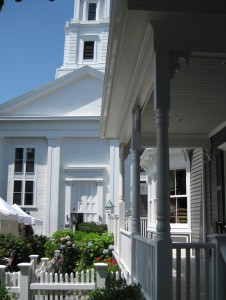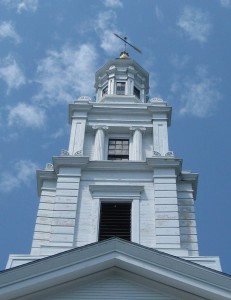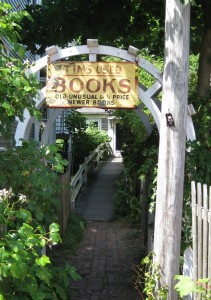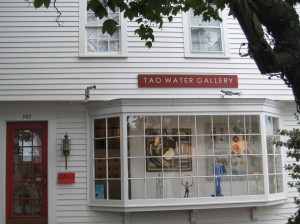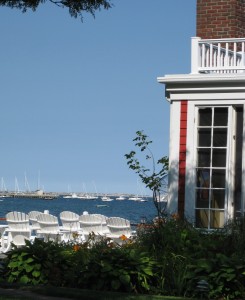A favorite subject of local artists, this white Dutch colonial, with its pristine lawn overlooking the bay, is the first home on Commercial Street’s East End.
Pigeons keep watch over Commercial Street from the dormer of the sturdy brick house where Norman Mailer lived and wrote for 25 years. After the author’s death, the home became the Norman Mailer Writers Colony.
An eighteenth-century Cape Cod cottage, glimpsed through the garden gate.
The gardens of Provincetown, though typcially small, are vigorously hardy, dramatic and colorful.
This spacious expanse of lawn, with its rugged old schoolyard swing set, is an odd, unexpected luxury in Provincetown, where bay-side land is at a great premium.
An artfully styled P-town compound, with a patriotic tableau of American flag and exuberant red and blue flowers in white window boxes.
At the Sea Urchin cottage, a profusion of wild roses and a sandy path to the water.
Tranquil spaces may be found even in the busiest section of Commercial Street, as here on the shady porch of Shor, a home furnishings showroom. Next door is the Unitarian Universalist Meeting House, built in 1847. The church’s front lawn, when not hosting an open-air market, offers an inviting escape from the crowds, as does its gracious interior, notable for the trompe l’oeil sculptural paintings in the sanctuary.
The beautifully detailed tower of the Meeting House.
This charming book store, located in a little house behind and surrounded by art galleries in the midst of Commercial Street, is reached by a tree-shaded pathway. D and I stop in at Tim’s to browse the shelves for interesting bargains and to enjoy the quiet.
Artists began to discover the small fishing village of Provincetown in the last decades of the nineteenth century. It quickly became established as an artist’s colony after Charles Hawthorne opened his Cape Cod School of Art in 1899. Now, over 40 galleries display a wide range of styles. In the hands of local artists, the regional tradition of atmospheric, Impressionistic landscapes, still lifes and figurative work remains vital and fresh. The gallery above specializes in bold contemporary Asian art. Many of the galleries are staffed by the artists themselves, who tend to be friendly and unpretentious.
The 200-year old Red Inn, which hosts one of the town’s most acclaimed restaurants, is in Commercial Street’s far West End, past the reach of the heaviest crowds. The deck, with its view of the harbor, is a spectacular spot for a sunset drink. Here, in the repose of early morning, neat white chairs welcome the promise of another beautiful day.

